Indonesia Facts : Economy, History, Languages and More
- Official Name: Republik Indonesia
- Location: Southeast Asia
- Capital: Jakarta
- Religion: Islam, Protestantism, Roman Catholicism, Hinduism, Buddhism
- Motto: Unity in Diversity
- Size: 735,000 square miles in area
- Cities: Jakarta, Surabaya, Bandung, Bekasi
- Currency: Indonesian rupiah
- Government: Unitary presidential constitutional republic
- Literacy Rate: 93%
Indonesia Facts Infographics

Indonesia Is the Fourth Most Populous Country in the World
Indonesia facts reveal that with over 250,000,000 inhabitants (approximately 3.5% of the world population), Indonesia is currently the fourth most populous country in the world, after China with 1.4 billion inhabitants (19% of the world population), India with 1.3 billion inhabitants (18% of the world population) and the USA with over 300,000 inhabitants (4% of the world population). But the high population growth in Indonesia will likely cause the country to overtake the US in population in only a few decades, meaning it will soon become the third most populous country in the world.
More Than 700 Languages Are Spoken in Indonesia
Although Indonesia recognizes only one official language – Indonesian (a variant of Malay, locally known as Bahasa Indonesia) – there are more than 700 other languages spoken in the country. The official Indonesian language is used in commerce, administration, education, media and in most printed books, but many Indonesians speak a different language as their first language.
Indonesian is the most widely spoken language, with roughly 210 million speakers, followed by Javanese with 84 million speakers, Sundanese with 34 million speakers and Madurese with 14 million speakers. Since Javanese is not an official language of its homeland Indonesia, it is considered to be the most widely spoken language without any official status in the world.
Indonesia Is the Largest Archipelago in the World
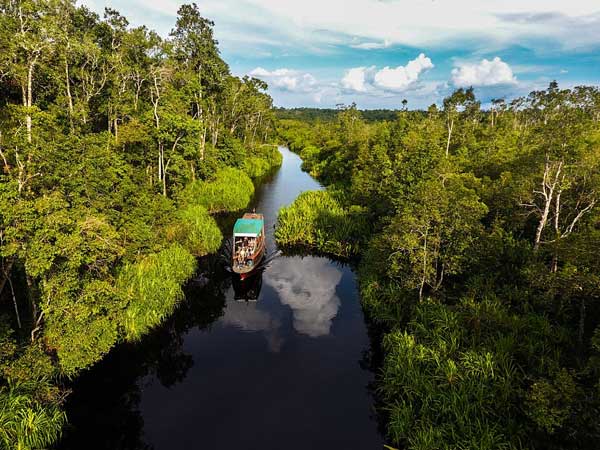
The largest archipelago in the world consists of around 18,000 islands, of which around 6,000 are inhabited. Most of the islands are completely Indonesian, while some (Borneo, Sebatik, Timor and New Guinea) are shared with neighboring countries. The five major islands are Sumatra, Java, Borneo, Sulawesi and New Guinea, and these are accompanied by two major archipelagos (the Maluku Islands and Nusa Tenggara) and 60 smaller archipelagos. In total, these islands span more than 3,000 miles from east to west and thus fall into 3 different time zones: UTC+7, UTC+8 and UTC+9.
Only Brazil and Congo Have More Tropical Forests than Indonesia
This makes Indonesia third in the list of countries with the biggest tropical forest area. Even 340,000 square miles of Indonesian tropical forests of course cannot compete with Brazil’s 1.8 million square miles, but Indonesia’s forests are still very important. They are a major oxygen producer on Earth and are home to thousands of animal and plant species.
The existence of the Indonesian tropical forests is threatened in a similar way to that of the Amazon rainforest in South America – the forests are gradually disappearing due to human presence and suffered a 24% decrease in overall area between 1990 and 2005.
Indonesia Has the Largest Muslim Population in the World
Indonesia facts show that this large Asian country is very diverse when it comes to the religion of its population. Despite the presence of four great (in terms of number of worldwide followers) religions – Protestantism, Buddhism, Hinduism and Catholicism -, the majority of Indonesians follow another major religion of the world – Islam. Some 87% of Indonesians are Muslim (almost 210,000,000 people), and this constitutes the largest Muslim population in any single country in the world.
The government of Indonesia officially recognizes a sixth religion too – Confucianism, which is only (“only” for a country as large as Indonesia…) practiced by around 120,000 people -, but does not recognize atheism or agnosticism, while blasphemy is illegal. All Indonesians hold an identity card on which their religion is stated, although they have the right to leave that field blank if they choose to.
Indonesia Became an Independent Country Only after World War II
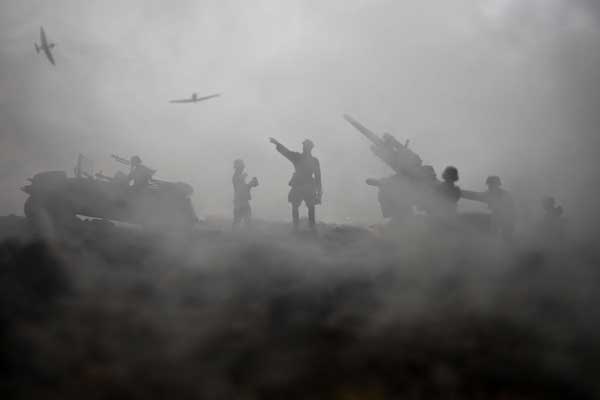
Indonesia facts show that the country has an extremely rich history, that started at least 1.5 million years ago, but it became an independent country only in the mid-20th century, after World War II.
During most of the war, Indonesia was occupied by Japan, which ended the century-and-a-half long rule of the Dutch. The Japanese occupation actually encouraged the Indonesian efforts for independence as it broke Dutch rule, and Indonesians even collaborated with the Japanese to permanently end Dutch reign. Japan supported Indonesian independence and even promised to announce it on August 24, 1945, but the Japanese were defeated before that date in the Pacific and surrendered to the Allied forces, forcing Sukarno and Hatta, the two fathers of modern Indonesia, to declare independence themselves on August 17, 1945. This date also marks the official Indonesia Independence Day, which is celebrated every year throughout the country.
Indonesia Has Only 2 Seasons
When talking about Indonesia, forget about summer, spring, autumn and winter – Indonesia facts reveal that this huge country only has two seasons: the wet season and the dry season, both monsoon-driven. And even the dry season is not really dry – it just has less rain than the wet season. The dry season typically lasts from May to September and the wet season lasts from October to April. Temperatures are quite stable in each part of the country throughout the year, but regional climates sometimes vary greatly. If you like high temperatures and lots of rain, Indonesia is definitely the place for you…
Half of Indonesia’s Population Lives on Less than $2 a Day
Indonesia is a very big country and is rich in natural resources. It has very developed agriculture and tourism sectors and is the largest economy in South Asia. It is also a member of the G-20 – an international group made up of the 20 biggest economies in the world. In addition to that, it is also the 10th largest economy in the world by nominal GDP, and the 27th biggest exporter in the world. But despite all that wealth, every 1 in 2 Indonesians lives in extreme poverty (extreme for western cultures) on less than $2 a day. For comparison: 1 in 25 Mexicans lives in similar conditions, and 1 in 7 Brazilians.
The Name of the Country Means Indian Island
Indonesia facts reveal that the country got its name from the combined Greek terms Indós and nèsos, meaning the “Indian island”. The origins of the name go back to the 18th century, long before Indonesia became a country, and long before the population of the region started using the name. The 19th century brought the first scientific use of the term Indonesia when talking about the region, but it was not until the early 20th century that it became widely used in international academic circles (excluding in the Netherlands, of course, where they preferred the terms the Malay Archipelago or the Netherlands East Indies). Indonesians started to use the term widely only after World War I.
Indonesia Is Divided into 7 Regions
Indonesia is so big that it is first divided into seven regions, and these regions are then further divided into 34 official Indonesian provinces. Every single one of these provinces has at least 1 million inhabitants, and some of them have over 10 million inhabitants. But most tourists still know Indonesia only by its seven regions: Sumatra, Java, Lesser Sunda Islands, Kalimantan, Sulawesi, Maluku Islands and Western New Guinea.
Sumatra (the sixth largest island in the world), Java (the most populous island in the world) and Bali (nicknamed the Island of Peace, the Island of Gods and the Morning of the World) are the islands most visited by tourists – who mostly come from other Asian countries, such as Singapore, Malaysia, China, Japan, South Korea and Taiwan, and the country’s southern neighbor, Australia.
Indonesia Lies on the Equator
This is the reason for its lack of usual seasons, its stable hot climate and consequently also the country’s tourist popularity. Indonesia lies between latitudes 11°S and 6°N, which makes its location in line (according to the equator) with the African countries of Kenya, Congo, DR Congo, Uganda and Gabon, and South American Ecuador.
Its location directly on the equator does not only bring stable tropical weather with high temperatures and a lot of rainfall, but also a stable duration of day and night – the length of day (or night) changes by only 48 minutes throughout the year.
Indonesia has over 150 Volcanoes
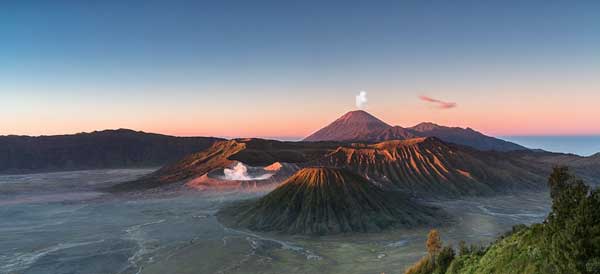
Indonesia facts also reveal that this archipelago country has over 150 volcanoes – and that 127 of them are still active! The reason why Indonesia has so many of these fire-breathing monsters is its location on the edges of the Pacific, Eurasian and Australian tectonic plates, which create volcanoes as they converge. Indonesian volcanoes are part of the infamous Ring of Fire – the area where most volcanoes are located (75% of all volcanoes on Earth) and where most earthquakes occur (90% of all earthquakes on Earth and over 80% of the Earth’s largest earthquakes).
The two most active volcanoes in Indonesia are Merapi and Kelut, whose eruptions have killed thousands of people in the last decades. Merapi is also responsible for the last major volcano eruption in Indonesia – it erupted in November 2010, claiming nearly 150 lives. But neither eruptions from Merapi nor eruptions from Kelut are anything compared to the super-eruption that occurred in Indonesia about 75,000 years ago, when super-volcano Toba erupted (and kept erupting for two weeks), causing the near-extinction of the human race.
Indonesia Is Home to the World’s Largest Flower
Many people have heard of the corpse flower, and some might know that it is considered to be the largest flower in the world and that it grows in Indonesia; but what you probably didn’t know is one of the most confusing Indonesia facts – that the corpse flower actually applies to flowers of two completely different families, both of which grow in Indonesia.
The first one is the Rafflesia family of flowers, which includes Rafflesia arnoldii – the flowering plant with the largest single flower (in terms of weight) in the world. The second is Araceae family, which includes Amorphophallus titanium (titan arum) – the proud owner of the world’s largest unbranched inflorescence.
And why do these flowers even carry the name corpse flower ( bunga bangkai in Indonesian)? Because of their odor, which is similar to the odor of decomposing mammals…
Indonesia Produces One of the Most Expensive Coffees in the World

Kopi luwak (also known as civet coffee) is one of the most expensive coffees in the world nowadays. Its price? Around $700 dollars per 1 kilogram ($315 per 1 lb.). But – believe it or not – the price is not the most interesting thing about the kupi luwak coffee; its method of production is far more interesting and, for many, also disgusting.
The cherries (inside which the coffee beans are found) of this special Indonesian coffee are first partially digested by an Asian palm civet (also known as toddy cat), defecated and then collected by local farmers. Who would have thought that one of the most expensive coffees in the world would come in the form of animal droppings…
Another “Walking Shark” Species Was Discovered in Indonesia in 2013
Did you know that sharks can walk? Well, according to Indonesia facts, they can. Hemiscyllium Halmahera, as the newly discovered shark is known in scientific circles, is a species of the bamboo shark family. And, as if finding a previously unknown species is not exciting enough, scientists also discovered that this amazing Indonesian shark can walk – not walk exactly like we humans do, but it can use its small fins to move along the ocean floor. This makes the Hemiscyllium Halmahera the sixth species of walking shark in Indonesian waters out of a total of nine species known in the whole world.
Indonesia’s Islands Bali and Lombok Have One of the Weirdest Naming Traditions
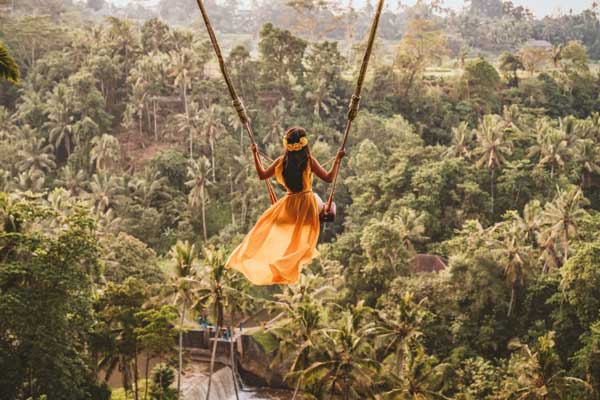
The traditional naming system of the region is known as the Balinese name and features two most extraordinary customs. First, the system does not differentiate between male and female names. Second, it only knows four different names, which are continuously repeated according to the birth order of children.
So, the firstborn child of the family is always known as “Wayan”, “Gede” or “Putu” (depending on which part of Bali or Lombok the child is born in, as different regions use different sets of names), the second as “Made” or “Kadek”, the third as “Nyoman” or “Komang” and the fourth as “Ketut”. What about the fifth child in the family? The naming circles back to the beginning, so the name of the firstborn is used again.
More Than 500,000 People Died in the Indonesian Killings of 1965-66
During the Indonesian Killings of 1965-66, as the incident is internationally known, more than half a million people died as a consequence of the anti-communist purge that followed the failed military coup known as the 30 September Movement. As a result of these dreadful killings, the Indonesian Communist Party was destroyed and President Sukarno, one of the founding fathers of Indonesia, was replaced by Suharto, a dictator who ruled Indonesia for more than three full decades, until he was forced to resign in 1998.
The tragedy of the killings, which are still not fully resolved in Indonesia today, is presented in a stunning manner in Joshua Oppenheimer’s award-winning documentaries The Act of Killing and The Look of Silence from 2012 and 2014 respectively. The documentaries hint that the number of victims in the killings might have even surpassed 2 million people…
Individuals with Different Religions Are Not Allowed to Marry in Indonesia
As we already revealed in one of the previous Indonesia facts, the Indonesian government only recognizes six religions (Islam, Protestantism, Roman Catholicism, Hinduism, Buddhism, and Confucianism) with others simply considered non-existent. But, choosing one of these religions is not only a matter of worship, but also greatly influences one’s life choices – like the choice of whom to marry.
In Indonesia, it is not allowed for members of two different religions to be married. For example, a Protestant man cannot marry a Hindu woman and a Buddhist man cannot marry a Muslim woman. But if two people of different religions really want to get married, one of them can always convert to the religion of the other…
The Famous French Frogs’ Legs Come from Indonesia

Cuisses de grenouille (French for frogs’ legs) is one of the best known specialties of French cuisine. If you have ever tried them, you know that they taste like chicken, but you probably didn’t know that the majority of frogs’ legs that the French use in their kitchens come from Indonesia…
In fact, Indonesia is responsible for around 45% of the world’s frogs’ legs exports and the domestic trade is also booming since frog legs are a part of various traditional Indonesian dishes. But Indonesia (and other frog-legs-eating countries) is often chastised for its trade of frog legs, since the harvesting of wild frogs raises many issues, including potential animal cruelty and the potential spread of various infectious diseases.
Indonesians Have a Special Way of Kissing
Indonesia facts teach us a fun fact that reveals Indonesians usually kiss in a different way than most of the people living in western cultures do. Indonesians call kissing cium, which means “to sniff” in translation. This is why it is not really surprising that most Indonesians kiss by sniffing each other’s cheeks instead of pressing their lips to the other person’s face. But in some places in Indonesia, people also rub noses together to show affection – this can be either a loving gesture among family members or a part of foreplay between a couple…
Indonesia Facts — Facts about Indonesia Summary
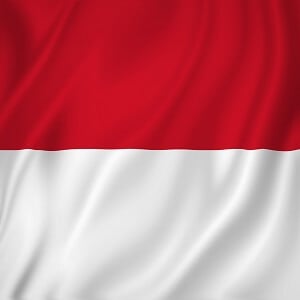 Indonesia is a large country in South Asia and the fourth most populous country in the world, with over 250,000,000 inhabitants. Indonesia is also the largest archipelago in the world, consisting of approximately 18,000 islands, of which Java, Sumatra and Bali are the most well-known. Indonesia’s location directly on the equator is the reason for its tropical climate, which has only two seasons (dry and wet) and attracts millions of tourists each year. Although six different religions are officially recognized in Indonesia, it is mostly a Muslim country and represents the biggest Muslim national community in the world. Its economy is big enough to ensure the country’s place among top 20 economies in the world, but almost half the population still lives in extreme poverty.
Indonesia is a large country in South Asia and the fourth most populous country in the world, with over 250,000,000 inhabitants. Indonesia is also the largest archipelago in the world, consisting of approximately 18,000 islands, of which Java, Sumatra and Bali are the most well-known. Indonesia’s location directly on the equator is the reason for its tropical climate, which has only two seasons (dry and wet) and attracts millions of tourists each year. Although six different religions are officially recognized in Indonesia, it is mostly a Muslim country and represents the biggest Muslim national community in the world. Its economy is big enough to ensure the country’s place among top 20 economies in the world, but almost half the population still lives in extreme poverty.
read more at facts.net